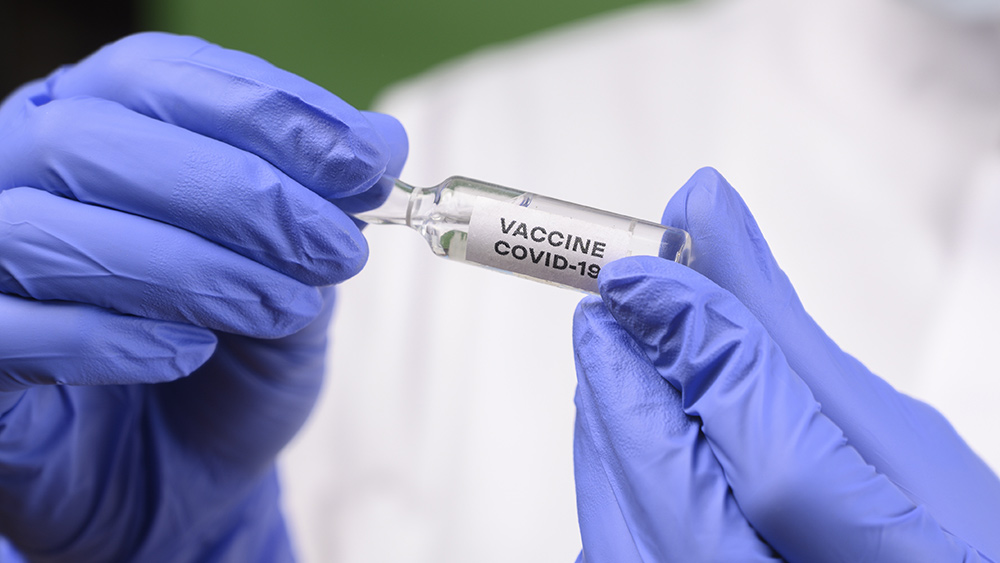Follow these effective tips to improve air quality in your home
11/22/2018 / By Zoey Sky

Fall is almost over, and people with respiratory conditions like asthma or allergies are already starting to rejoice. However, there’s one thing that you need to consider: Even if you don’t have asthma or allergies, poor air quality in your home or workplace may cause side effects such as headaches, fatigue, or shortness of breath.
Thankfully, the video below, uploaded on the Energy Matters, LLC Brighteon Channel, discusses several tips that can help eliminate common pollutants in your home.
You can watch the full Brighteon.com video here:
Is your home free from pollutants?
How you ever wondered if the air that you’re breathing is clean enough? Even if you can’t see them, the air around you is often full of various contaminants or pollutants such as:
- Asbestos, dust, fiberglass, and gases (e.g., formaldehyde from building materials)
- Bacteria, fungi, microbial contaminants, or molds that come from damp areas or stagnant water
- Carbon dioxide (CO2), perfume, or tobacco smoke.
- Car exhaust
- Cleaning chemicals
- Dust mites (from carpets, fabric, or foam chair cushions)
- Gases, odors, or vapors (such as off-gas emissions from furniture, carpets, and paints)
- Heating oil or propane fumes
- Pollen
Air pollution is invisible and nearly unavoidable. In fact, you breathe it in unknowingly. However, even the smallest particles may cause serious medical problems. (Related: Improving air quality can cut your risk for diabetes.)
Individuals living or working in areas with poor air quality may experience one or several of the following symptoms:

- Coughing and sneezing
- Dizziness
- Dryness and irritation of the eyes, nose, throat, and skin
- Fatigue
- Headaches
- Hypersensitivity and allergies
- Nausea
- Shortness of breath
- Sinus congestion
In most cases, people who experience these symptoms will notice that they feel better once they leave their offices. Since these symptoms are also caused by other health conditions like the common cold or the flu, it can be difficult to identify and resolve poor air quality problems. The best thing to do is to take measures to improve air quality at home or work.
You can do this by following some of the tips below:
- Cultivate houseplants indoors – Houseplants can help filter toxins in the air, and they also produce oxygen. However, a study involving the National Aeronautics and Space Administration (NASA) determined that only certain plants can help improve indoor air quality. Here are some of the best indoor plants to grow in your home or office: bamboo palm, English ivy, gerbera daisy, mother-in-law’s tongue, pot mum, and peace lily.
- Don’t use scented products – When you use air fresheners, candles, detergents, or household cleaning products with synthetic fragrances, you also infuse the air with harmful chemicals. According to the results of a University of Washington study, six popular air fresheners emit at least 100 volatile organic chemicals (VOCs), but they warned that out of the 100 VOCs emitted, none were listed on the label — while five of them released at least one or several cancer-causing chemicals.
- Eliminating existing pollution – Install a HEPA (high-efficiency particulate air) filter at home or work. HEPA filters can help remove pollutants like dust, mold, odors, pet dander, pollen, and smoke. A high-quality filter can also help get rid of airborne germs, which will prevent the spread of disease.
- Not bringing pollution inside your house – You can do this by buying and consuming organic foods and using natural and organic cleaning products. Store-bought household cleaning products are a significant contributor to poor home air quality. Instead of buying products that contain unpronounceable and harmful chemicals, use natural cleaners instead. Switch from household cleaners to natural cleaning products like baking soda, lemon juice, olive oil, and tea tree oil which don’t have any harsh ingredients.
View the full video guide with tips on how to improve indoor air quality, which you can watch at this link.
Browse more articles about eliminating air pollution in your home at Pollution.news.
Sources include:
Submit a correction >>
Tagged Under:
air quality, Brighteon, clean air, contaminants, disease causes, environment, environmental damage, environmental harm, environmental protection, green home, HEPA, high-efficiency particulate air, house plants, how-to, indoor air quality, organic food, organic products, pollutants, poor air quality
This article may contain statements that reflect the opinion of the author





















